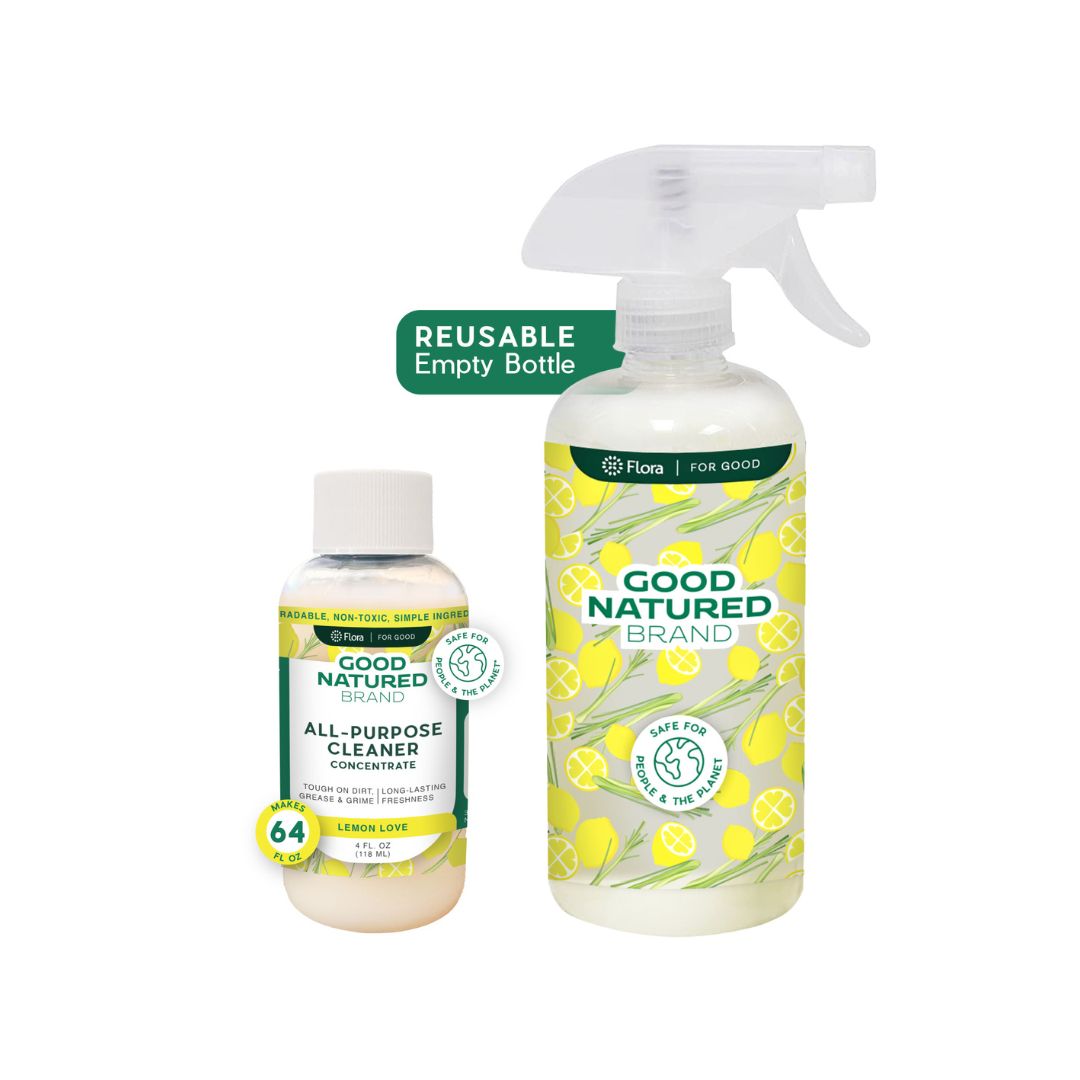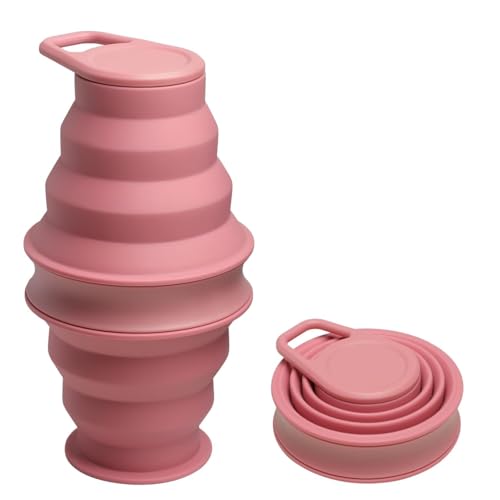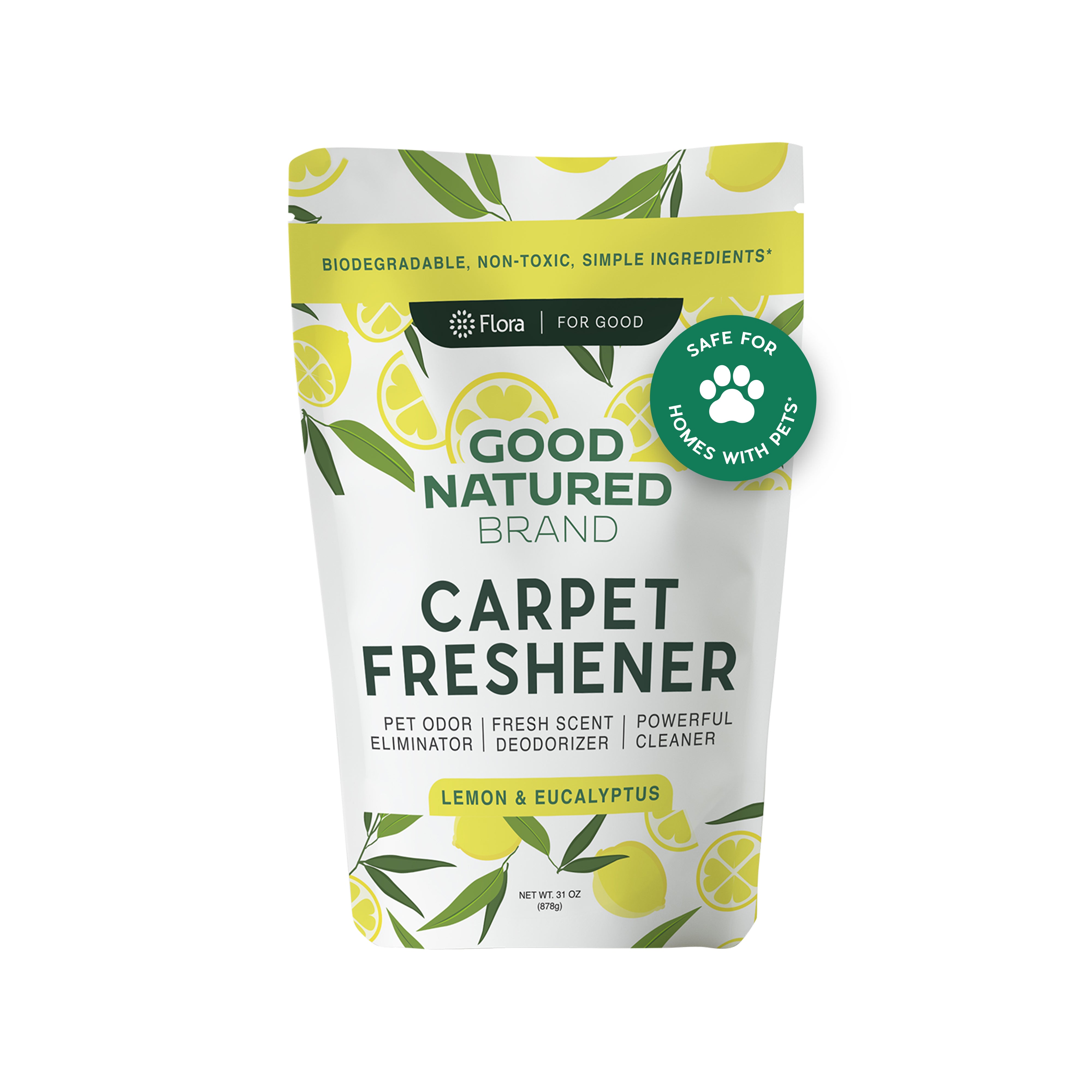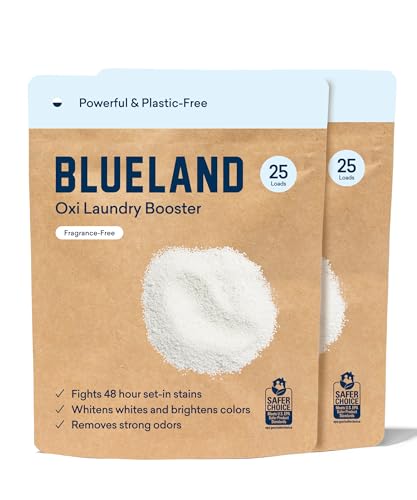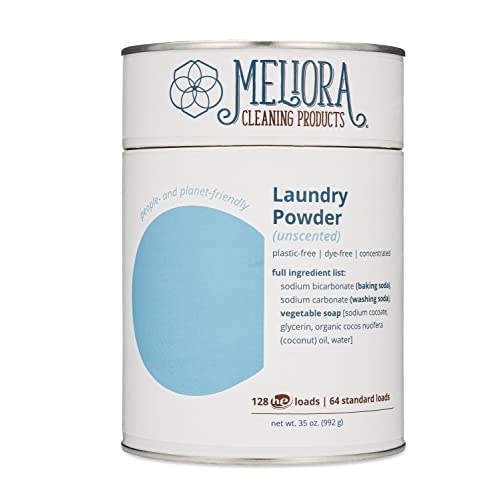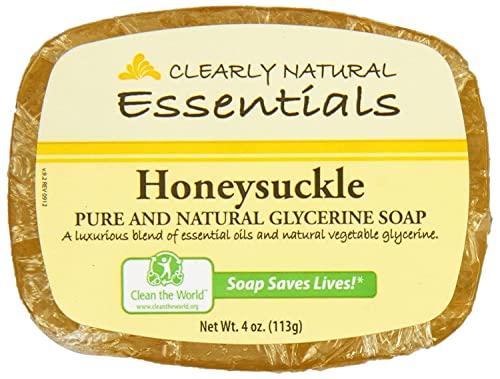
Clearly Natural Honeysuckle Glycerine Bar Soap - Hydrating, Gentle Cleanse, 4oz, 6 per case


Fragrance
High RiskFragrance refers to a mixture of aromatic compounds used in products to provide scent. It is commonly listed as 'fragrance' or 'parfum' on product labels and can serve various functions, including enhancing user experience and masking undesirable odors.
Sustai Insights
Fragrance offers functional benefits by improving product appeal; however, it poses significant health risks, notably a high likelihood of causing allergies and allergic contact dermatitis. Environmental risks include potential pollution and endocrine disruption, though its overall carcinogenicity is low. Regulatory bodies have noted concerns regarding its use, leading to a high-risk classification. Safe usage practices should be observed, and alternatives such as natural essential oils are recommended for those sensitive to synthetic fragrances.
Citrus Reticulata Leaf Oil
High RiskCitrus reticulata leaf oil is derived from the leaves of the mandarin orange tree. It is primarily used for its aromatic properties in personal care products, contributing to fragrance and sensory experiences.
Sustai Insights
Citrus reticulata leaf oil offers functional benefits as a natural fragrance component but has a high allergenic potential, raising concerns for sensitive individuals. It poses low risks for carcinogenicity and developmental toxicity, but regulatory restrictions exist due to its allergenic effects. Environmental risks include persistence and bioaccumulation. Overall, the risk level associated with this ingredient is high, and caution is advised in its use. Alternatives such as synthetic fragrances or other plant-derived oils may offer safer options.
Cocos Nucifera (Coconut)
Medium RiskCocos Nucifera, commonly known as coconut, is derived from the coconut palm. It is widely used in various cosmetic and personal care products for its moisturizing properties, acting as an emollient and skin-conditioning agent, enhancing texture and hydration.
Sustai Insights
Cocos Nucifera offers functional benefits such as effective moisturization and conditioning for the skin, while being biodegradable and often sustainably sourced. Health risks are minimal, with low concerns for carcinogenicity, allergies, and reproductive toxicity. Environmental risks are also low, as it does not accumulate in organisms or significantly pollute. Regulatory bodies do not impose restrictions, supporting its overall low-risk status. Safe usage practices include patch testing for sensitivities, though alternatives like shea butter or jojoba oil may offer similar benefits.
Zea Mays (Corn)
Low RiskZea mays (corn) fruit is derived from the plant Zea mays. It is commonly used in various cosmetic formulations for its functional properties, including acting as a humectant and providing texture in products.
Sustai Insights
Zea mays offers functional benefits such as moisture retention and improved product texture. It is considered safe with low health risks, including minimal concerns regarding carcinogenicity, allergies, or reproductive toxicity. Environmentally, it poses low risks, with no significant pollutant or bioaccumulation potential. Regulatory assessments do not indicate any restrictions. Overall, the ingredient is assessed as low risk, making it a viable option in cosmetic formulations.
Elaeis Guineensis (Palm) Kernel Oil
Low RiskElaeis guineensis (palm) kernel oil is an oil derived from the seeds of the African oil palm tree. It functions primarily as an emollient and moisturizing agent in cosmetic formulations, enhancing texture and providing moisture retention.
Sustai Insights
Elaeis guineensis (palm) kernel oil offers functional benefits as a moisturizing agent and is often sustainably sourced. Health risks are low, with minimal concerns regarding carcinogenicity, allergies, or reproductive toxicity. Environmental risks appear low, with no significant pollutant or bioaccumulation issues reported. Regulatory bodies impose few restrictions, suggesting overall low risk. Safe usage practices recommend using it within established concentrations, while alternatives such as coconut oil may be considered for similar functions. Overall, this ingredient presents a low risk profile.
Caramel Color
Low RiskCaramel color is a concentrated sugary material obtained through the controlled heat treatment of carbohydrates, primarily used as a food coloring agent. It is commonly incorporated in various food and beverage products to impart a brown hue and enhance visual appeal.
Sustai Insights
Caramel color serves effectively as a coloring agent in food products, contributing to aesthetic appeal without substantial health risks. Regulatory assessments indicate low concerns regarding carcinogenicity, allergenic potential, and reproductive toxicity. However, contamination during production may pose risks. While it is generally recognized as safe, its environmental impact is minimal, leading to an overall low-risk assessment. Safe usage practices are advised, and alternatives like natural colorants exist for those seeking eco-friendlier options.
Sodium Citrate
Low RiskSodium citrate is used in cosmetic formulations primarily as a buffering agent, helping to stabilize pH levels. It is derived from citric acid and is commonly found in various personal care products to enhance their efficacy and stability.
Sustai Insights
Sodium citrate offers functional benefits such as effective pH regulation and acts as a mild preservative. It is generally recognized as safe with low risks for cancer, allergies, and reproductive toxicity. Environmental concerns are minimal, with no significant pollutant potential or bioaccumulation. Regulatory bodies like the FDA and COSMOS have no major restrictions on its use. Overall, sodium citrate presents a low risk, making it a viable ingredient in cosmetic formulations. Safe usage practices should be followed, and alternatives are not typically necessary.
Vegetarian Glycerin
Low RiskVegetarian glycerin, also known as glycerol, is a colorless, odorless, and viscous liquid derived from plant sources. It is primarily used as a humectant, solvent, and emollient in various personal care products, helping to retain moisture and improve texture.
Sustai Insights
Vegetarian glycerin offers functional benefits as an effective humectant, promoting hydration and skin smoothness. It is biodegradable and typically sustainably sourced. Health risks associated with glycerin are low, with no significant concerns for carcinogenicity, allergens, or reproductive toxicity. Environmental risks are minimal, and it is not subject to major regulatory warnings. Overall, the risk level for this ingredient is low, making it a safe choice in formulations. Safe usage practices include ensuring proper concentrations in products, and alternatives such as propylene glycol exist but may have differing properties.
Bixa Orellana (Annatto) Seed Extract
Low RiskBixa orellana (annatto) seed extract is derived from the seeds of the annatto tree, primarily used as a natural colorant in food and cosmetic products. It imparts a yellow to orange hue and may also serve as a flavoring agent. The extract is recognized for its potential antioxidant properties.
Sustai Insights
Bixa orellana seed extract offers functional benefits as a natural coloring agent and may have antioxidant properties, contributing to product appeal. It is sustainably sourced and poses low health risks, with minimal concerns regarding carcinogenicity, allergies, and reproductive toxicity. Environmental risks are also low, with no significant pollutant or bioaccumulation potential noted. Regulatory bodies have not imposed restrictions on its use, indicating a favorable risk level overall. Safe usage practices should be observed, and alternatives may include other natural colorants like beetroot extract, though annatto remains a low-risk option.
Beta Vulgaris (Common Beet) Juice Extract
Low RiskBeta vulgaris (common beet) juice extract is derived from the beetroot plant and is commonly utilized for its color properties in various cosmetic and personal care products. It is known for its natural pigmentation and is often used as a coloring agent.
Sustai Insights
Beta vulgaris juice extract offers functional benefits such as natural pigmentation and potential antioxidant properties. It is generally recognized as safe, with low concerns regarding carcinogenicity, allergies, and reproductive toxicity. Environmental risks are minimal, and it is not classified as a pollutant. Regulatory status shows no restrictions, indicating low overall risk. Usage is safe when incorporated into formulations, and alternatives may include other natural colorants like turmeric or spirulina. Thus, this ingredient is assessed to have a low risk profile.
Zea Mays (Corn)
Low RiskZea mays (corn) fruit is derived from the plant Zea mays. It is commonly used in various cosmetic formulations for its functional properties, including acting as a humectant and providing texture in products.
Sustai Insights
Zea mays offers functional benefits such as moisture retention and improved product texture. It is considered safe with low health risks, including minimal concerns regarding carcinogenicity, allergies, or reproductive toxicity. Environmentally, it poses low risks, with no significant pollutant or bioaccumulation potential. Regulatory assessments do not indicate any restrictions. Overall, the ingredient is assessed as low risk, making it a viable option in cosmetic formulations.
Elaeis Guineensis (Palm) Kernel Oil
Low RiskElaeis guineensis (palm) kernel oil is an oil derived from the seeds of the African oil palm tree. It functions primarily as an emollient and moisturizing agent in cosmetic formulations, enhancing texture and providing moisture retention.
Sustai Insights
Elaeis guineensis (palm) kernel oil offers functional benefits as a moisturizing agent and is often sustainably sourced. Health risks are low, with minimal concerns regarding carcinogenicity, allergies, or reproductive toxicity. Environmental risks appear low, with no significant pollutant or bioaccumulation issues reported. Regulatory bodies impose few restrictions, suggesting overall low risk. Safe usage practices recommend using it within established concentrations, while alternatives such as coconut oil may be considered for similar functions. Overall, this ingredient presents a low risk profile.
Caramel Color
Low RiskCaramel color is a concentrated sugary material obtained through the controlled heat treatment of carbohydrates, primarily used as a food coloring agent. It is commonly incorporated in various food and beverage products to impart a brown hue and enhance visual appeal.
Sustai Insights
Caramel color serves effectively as a coloring agent in food products, contributing to aesthetic appeal without substantial health risks. Regulatory assessments indicate low concerns regarding carcinogenicity, allergenic potential, and reproductive toxicity. However, contamination during production may pose risks. While it is generally recognized as safe, its environmental impact is minimal, leading to an overall low-risk assessment. Safe usage practices are advised, and alternatives like natural colorants exist for those seeking eco-friendlier options.
Sodium Citrate
Low RiskSodium citrate is used in cosmetic formulations primarily as a buffering agent, helping to stabilize pH levels. It is derived from citric acid and is commonly found in various personal care products to enhance their efficacy and stability.
Sustai Insights
Sodium citrate offers functional benefits such as effective pH regulation and acts as a mild preservative. It is generally recognized as safe with low risks for cancer, allergies, and reproductive toxicity. Environmental concerns are minimal, with no significant pollutant potential or bioaccumulation. Regulatory bodies like the FDA and COSMOS have no major restrictions on its use. Overall, sodium citrate presents a low risk, making it a viable ingredient in cosmetic formulations. Safe usage practices should be followed, and alternatives are not typically necessary.
Vegetarian Glycerin
Low RiskVegetarian glycerin, also known as glycerol, is a colorless, odorless, and viscous liquid derived from plant sources. It is primarily used as a humectant, solvent, and emollient in various personal care products, helping to retain moisture and improve texture.
Sustai Insights
Vegetarian glycerin offers functional benefits as an effective humectant, promoting hydration and skin smoothness. It is biodegradable and typically sustainably sourced. Health risks associated with glycerin are low, with no significant concerns for carcinogenicity, allergens, or reproductive toxicity. Environmental risks are minimal, and it is not subject to major regulatory warnings. Overall, the risk level for this ingredient is low, making it a safe choice in formulations. Safe usage practices include ensuring proper concentrations in products, and alternatives such as propylene glycol exist but may have differing properties.
Fragrance
High RiskFragrance refers to a mixture of aromatic compounds used in products to provide scent. It is commonly listed as 'fragrance' or 'parfum' on product labels and can serve various functions, including enhancing user experience and masking undesirable odors.
Sustai Insights
Fragrance offers functional benefits by improving product appeal; however, it poses significant health risks, notably a high likelihood of causing allergies and allergic contact dermatitis. Environmental risks include potential pollution and endocrine disruption, though its overall carcinogenicity is low. Regulatory bodies have noted concerns regarding its use, leading to a high-risk classification. Safe usage practices should be observed, and alternatives such as natural essential oils are recommended for those sensitive to synthetic fragrances.
Bixa Orellana (Annatto) Seed Extract
Low RiskBixa orellana (annatto) seed extract is derived from the seeds of the annatto tree, primarily used as a natural colorant in food and cosmetic products. It imparts a yellow to orange hue and may also serve as a flavoring agent. The extract is recognized for its potential antioxidant properties.
Sustai Insights
Bixa orellana seed extract offers functional benefits as a natural coloring agent and may have antioxidant properties, contributing to product appeal. It is sustainably sourced and poses low health risks, with minimal concerns regarding carcinogenicity, allergies, and reproductive toxicity. Environmental risks are also low, with no significant pollutant or bioaccumulation potential noted. Regulatory bodies have not imposed restrictions on its use, indicating a favorable risk level overall. Safe usage practices should be observed, and alternatives may include other natural colorants like beetroot extract, though annatto remains a low-risk option.
Beta Vulgaris (Common Beet) Juice Extract
Low RiskBeta vulgaris (common beet) juice extract is derived from the beetroot plant and is commonly utilized for its color properties in various cosmetic and personal care products. It is known for its natural pigmentation and is often used as a coloring agent.
Sustai Insights
Beta vulgaris juice extract offers functional benefits such as natural pigmentation and potential antioxidant properties. It is generally recognized as safe, with low concerns regarding carcinogenicity, allergies, and reproductive toxicity. Environmental risks are minimal, and it is not classified as a pollutant. Regulatory status shows no restrictions, indicating low overall risk. Usage is safe when incorporated into formulations, and alternatives may include other natural colorants like turmeric or spirulina. Thus, this ingredient is assessed to have a low risk profile.
Citrus Reticulata Leaf Oil
High RiskCitrus reticulata leaf oil is derived from the leaves of the mandarin orange tree. It is primarily used for its aromatic properties in personal care products, contributing to fragrance and sensory experiences.
Sustai Insights
Citrus reticulata leaf oil offers functional benefits as a natural fragrance component but has a high allergenic potential, raising concerns for sensitive individuals. It poses low risks for carcinogenicity and developmental toxicity, but regulatory restrictions exist due to its allergenic effects. Environmental risks include persistence and bioaccumulation. Overall, the risk level associated with this ingredient is high, and caution is advised in its use. Alternatives such as synthetic fragrances or other plant-derived oils may offer safer options.
Cocos Nucifera (Coconut)
Medium RiskCocos Nucifera, commonly known as coconut, is derived from the coconut palm. It is widely used in various cosmetic and personal care products for its moisturizing properties, acting as an emollient and skin-conditioning agent, enhancing texture and hydration.
Sustai Insights
Cocos Nucifera offers functional benefits such as effective moisturization and conditioning for the skin, while being biodegradable and often sustainably sourced. Health risks are minimal, with low concerns for carcinogenicity, allergies, and reproductive toxicity. Environmental risks are also low, as it does not accumulate in organisms or significantly pollute. Regulatory bodies do not impose restrictions, supporting its overall low-risk status. Safe usage practices include patch testing for sensitivities, though alternatives like shea butter or jojoba oil may offer similar benefits.
Experience the gentle touch of Clearly Natural Honeysuckle Glycerine Bar Soap. This 4-ounce soap is crafted to nourish and hydrate your skin while delivering a refreshing aroma, making it an ideal addition to your personal care routine.
- Natural Glycerine: Retains moisture, ensuring your skin stays hydrated, soft, and supple all day long.
- Delicate Fragrance: Enjoy a light honeysuckle scent that invigorates your senses with every wash.
- Gentle Formula: Perfect for all skin types, including sensitive skin, providing a soothing cleanse without irritation.
- Chemical-Free: Made without harsh chemicals, offering a safe and gentle cleansing experience for you and the environment.
- Moisturizing: Leaves your skin feeling smooth and nourished, enhancing your natural glow after each use.
Made with responsibly sourced ingredients, this soap supports both your health and the planet. Enjoy a luxurious cleansing experience that you can feel good about.
Subscribe & Save with Sustai
- Best Price Guarantee: Always enjoy the lowest prices on sustainable home essentials.
- No Surprises: We’ll notify you before shipping. No hidden fees, ever.
- You’re in Charge: Change, pause, or cancel your subscription anytime with ease.
- Eco-Friendly Deliveries: Our grouped shipments mean less packaging and lower emissions.
Join us on a sustainable journey. Special offers for a limited time! Prices and promotions may change.
Recommended Products
Experience the gentle touch of Clearly Natural Honeysuckle Glycerine Bar Soap. This 4-ounce soap is crafted to nourish and hydrate your skin while delivering a refreshing aroma, making it an ideal addition to your personal care routine.
- Natural Glycerine: Retains moisture, ensuring your skin stays hydrated, soft, and supple all day long.
- Delicate Fragrance: Enjoy a light honeysuckle scent that invigorates your senses with every wash.
- Gentle Formula: Perfect for all skin types, including sensitive skin, providing a soothing cleanse without irritation.
- Chemical-Free: Made without harsh chemicals, offering a safe and gentle cleansing experience for you and the environment.
- Moisturizing: Leaves your skin feeling smooth and nourished, enhancing your natural glow after each use.
Made with responsibly sourced ingredients, this soap supports both your health and the planet. Enjoy a luxurious cleansing experience that you can feel good about.

You can have at most 2 Sustainable Steals products in your cart
Customer Reviews
This product is rated 4.4 of 5.0 stars.
It has received 5 reviews.
